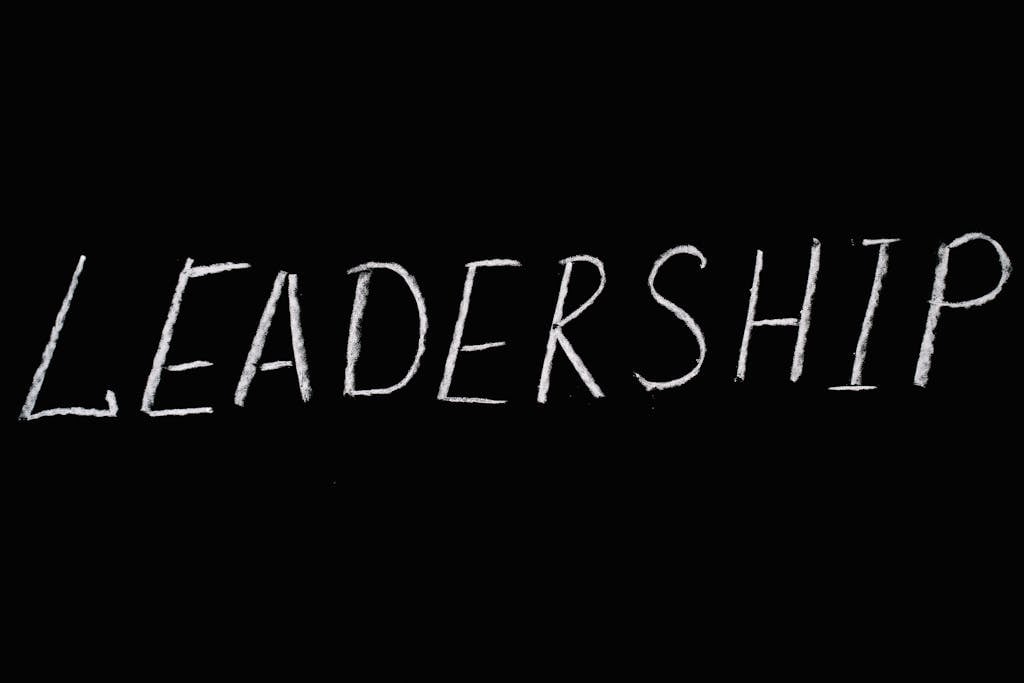Article: ESG leadership in the era of sustainable development
With our partner FERI, we have prepared another insightful article as part of the Green Power project, focusing on the competencies required for ESG leaders. The topic of green competencies has sparked significant discussions around labor markets, education, and the future of green jobs. These conversations naturally led us to explore ESG leadership—an area deeply connected to our project’s objectives and the research we have conducted.
This new article delves into the essential skills and qualities ESG leaders need to drive sustainable change, including flexibility, strategic thinking, risk management, and the ability to foster innovation. By highlighting the intersection of green competencies and leadership within the framework of Environmental, Social, and Governance (ESG) principles, we aim to provide practical insights for professionals navigating the challenges of a rapidly evolving, sustainability-driven world.
During the Green Power project we continue to bridge the gaps between green education, the labor market, and sustainable development practices.
ESG leadership in the era of sustainable development: what skills do leaders need?
The era of sustainable development brings new challenges and expectations for business leaders, with ESG—Environmental, Social, and Governance—emerging as one of the key areas of focus. ESG leadership demands that managers not only be attuned to the changing needs of consumers and investors but also possess the skills to align their company’s strategies and operations with the growing requirements of sustainable development. This article explores how modern leadership can support organizations in effectively implementing ESG principles to build a stable, ethical, and innovative work environment that addresses contemporary challenges.
Understanding ESG and Its Impact on the Business Environment
ESG stands for Environmental, Social Responsibility, and Governance. How an organization is perceived by clients, collaborators, and other stakeholders increasingly depends on whether—and to what extent—its leadership recognizes the company’s impact on these three areas. Neglecting any of these aspects can negatively affect a company’s competitiveness, resulting in increased costs, customer attrition, and reduced access to talented employees. Therefore, a critical competency for leaders is proactively monitoring ESG trends and issues. Leaders must understand ESG indicators and interpret data to effectively identify areas for improvement.
Flexibility and Adaptability
Challenges in business operations—ranging from new legal requirements, evolving customer and employee expectations, to the effects of climate change—require leaders to act under uncertainty and adapt to new market realities. They must identify risks to existing operations and seize opportunities in emerging market niches created by changing stakeholder expectations and new conditions. Organizations that can respond swiftly and effectively to these challenges stand to expand their activities into new areas and offer products and services aligned with ESG and sustainable development.
Strategic Thinking and Innovation
Pursuing new initiatives should account for long-term consequences to ensure investments are effective and help maintain a competitive advantage. Embedding ESG principles into business strategy—and updating them regularly—facilitates a balance between innovation and the creation of ethical, eco-friendly products that attract new customers and investors.[1]
Creativity
The uncertainty associated with integrating ESG into business processes demands unconventional and sometimes entirely new solutions. Creativity becomes an essential trait for leaders, whether it involves developing or improving products and services, streamlining business processes to reduce carbon footprints, or enhancing inclusivity.
ESG Risk Management
Leaders must evaluate environmental, social, and governance risks, particularly those that could affect an organization’s reputation and stability. The main challenge of ESG risk identification lies in its cross-sectional nature, affecting both operations and the business environment.[2] Understanding and monitoring ESG issues help leaders diagnose risks in business processes, enabling them to develop and implement solutions that overcome challenges and strengthen market position.
Communication Skills
Creating new solutions is only half the battle. To turn ESG-compliant products and services into profit, leaders must effectively communicate their benefits to customers. Alongside “hard” skills such as data analysis and strategic thinking, leaders should also develop “soft” skills to better convey new ideas. Communication abilities are crucial for convincing investors and collaborators to adopt environmentally friendly innovations and for earning consumers’ trust by showcasing the advantages of ESG-aligned solutions.
Team Building
ESG leaders must excel at building teams, ideally composed of individuals aware of the importance of sustainable development. However, such awareness is rare, making it essential for ESG leaders to persuade skeptics and those who lack confidence in the likelihood of success.
HR departments and leaders responsible for ESG must collaborate to foster more inclusive and sustainable workplaces.[3] This includes aspects like neurodiversity and an aging population. Employing individuals with diverse ways of thinking—both neurotypical and neurodivergent—broadens perspectives and approaches to problem-solving, enhancing innovation and flexibility. Addressing neurodiversity requires ESG leaders to tailor management and communication methods.
Additionally, with aging populations, creating roles and development programs for older workers becomes crucial. Moving beyond “young and dynamic teams” promotes intergenerational balance, fostering knowledge exchange and enhancing workplace culture.
Change Management
Change management helps organizations smoothly introduce new solutions and adapt to evolving environments.[4] Effective change management is essential at all organizational levels, and ESG managers should develop skills to influence collaborators and stakeholders during transitional periods to implement necessary changes in business processes.
Ethical Leadership and Transparency
Social and ethical issues are integral to ESG. While many discussions focus on environmental protection and climate change mitigation, equally important aspects include fair treatment of employees, transparency, and addressing social challenges. Ethical leadership involves treating everyone with fairness regardless of characteristics like age, gender, race, religion, or role. Transparent business practices build credibility and enhance brand value.
An interesting ethical issue is the reliability of ESG rankings. According to a report by the consultancy firm ERM, professional investors increasingly rely on these rankings for decision-making.[5] However, trust in existing rankings is limited, as they often fail to distinguish genuine actions from greenwashing—activities that appear environmentally friendly but lack real benefits. Such practices ultimately harm organizations, leading to lost customer trust and significant financial penalties (up to 10% of annual revenue[6]). ESG leaders can enhance transparency at the market level by prioritizing open communication.
Data-Driven Decision-Making
One of the key competencies for leaders during times of change is making decisions based on available data. Evaluating the credibility of information is particularly important. Data enables companies to validate and monitor their impact, leading to more conscious and responsible decision-making.
ESG leaders often base decisions on machine learning algorithms, which analyze massive amounts of data to identify risks and opportunities, allocate resources effectively, and avoid superficial actions. Leaders must remain aware of biases present in algorithmic analyses to prevent unintended consequences, such as injustice or exclusion.
Empathy and Social Engagement
ESG leadership requires going beyond standard practices to show greater understanding of collaborators’ needs and engaging in social initiatives. While this aligns more closely with corporate social responsibility (CSR), these areas are interconnected and complement one another, forming a cohesive strategy. Actions benefiting local or broader communities, which go beyond routine operations, align well with ESG metrics.
Conclusion
Effective ESG leadership demands a wide range of competencies that enable responsible management in line with sustainable development principles. Critical skills include understanding ESG indicators, interpreting data, adaptability, long-term thinking, and creativity in developing ESG-compliant solutions. Leaders must manage risks, communicate the benefits of ESG initiatives, and foster teams aware of sustainable development needs. Ethical approaches, data-driven decisions, and social engagement allow ESG leaders to positively impact their environment and support an organization’s long-term success.
This article was created as part of the “Green Power” project (No. 2023-1-PL01-KA210-VET-000153832), funded by the European Union. The views and opinions expressed are solely those of the author(s) and do not necessarily reflect the views of the European Union or the European Education and Culture Executive Agency (EACEA). Neither the EU nor EACEA is responsible for them.
All results developed under the “Green Power” project are shared under open licenses (CC BY-SA 4.0 DEED). They are free to use without restrictions. Copying or processing these materials in whole or in part without the author’s consent is prohibited. When using the results, it is necessary to cite the funding source and the authors.
[1] GPW (2023) “Wytyczne do raportowania ESG – Przewodnik dla spółek”, https://www.gpw.pl/pub/GPW/ESG/Wytyczne_do_raportowania_ESG.pdf
[2] Felix Grabher (dostęp 11.11.2024) “Zarządzanie ryzykiem ESG: podejście zintegrowane”, https://www.boc-group.com/pl/blog/grc/zarzadzanie-ryzykiem-esg-podejscie-zintegrowane/#toc_Na_czym_polega_zarzadzanie_ryzykiem_ESG
[3] Wioletta Marciniak-Mierzwa (2023) “Zbliża się kolejna rewolucja. Dużą rolę odegrają w niej działy HR “, https://www.ey.com/pl_pl/insights/workforce/zbliza-sie-kolejna-rewolucja-duza-role-odegraja-w-niej-dzialy-hr-esg-fy24
[4] https://pl.wikipedia.org/wiki/Zarz%C4%85dzanie_zmian%C4%85
[5] ERM (2023) “Rate the Raters 2023: ESG Ratings at a Crossroads”, https://www.erm.com/insights/rate-the-raters-2023/
[6] Piotr Gogol (2024) “Co to jest greenwashing? Przykłady i regulacje prawne”, https://www.ey.com/pl_pl/insights/climate-change-sustainability-services/greenwashing-co-to-jest-esg-fy24






